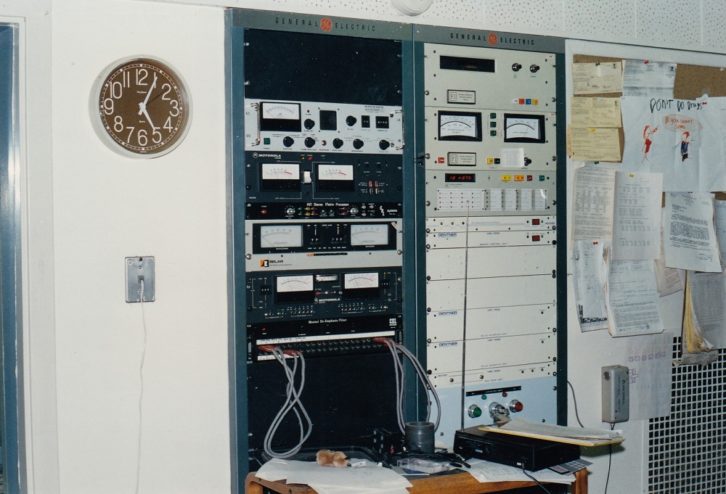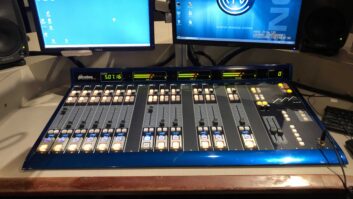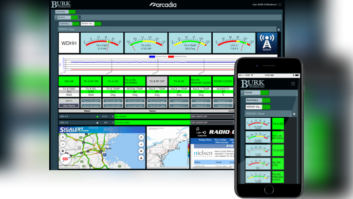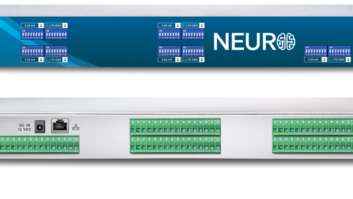 The author is tech editor of RW Engineering Extra.
The author is tech editor of RW Engineering Extra.
Remote control systems have come a long way in my 45-year broadcast engineering career. I have had the pleasure — and sometimes frustration — of following these changes.
There was a time when you could call the phone company and order a “dry pair” from point to point, and over that dry pair you could connect your remote control system with its telephone dial, stepper relays and DC metering.
Those old systems were always interesting, especially when the steppers got out of sync, but somehow they got the job done.
Then came the Moseley TRC-15 types that used audio tones for telemetry. We could use those over a dry pair or just about any bidirectional telco circuit, or you could use them over a subcarrier on an STL for the outbound control functions (if I recall correctly, this used a 300-400 Hz FSK scheme for the wireline version).
Some folks used an over-the-air SCA for telemetry backhaul for the TRC-15 — if you couldn’t get a reading on anything, the transmitter must be off! — but others used telemetry return links on one of eight discrete 450/455 MHz frequencies designated for such by the FCC. And there were no status indications.
But all in all, the TRC-15 was a huge step up (no pun intended) from the old stepper relay DC remote control systems. It was an even better platform if you installed the digital telemetry adaptor offered as an aftermarket add-on from Hallikainen and Friends.
Up in smoke
There were some digital systems from Moseley that came after the TRC-15. I remember using them in some of the TV stations at which I worked. The red LED digital readouts took away the sometimes difficult task of meter scale interpretation and interpolation, always a plus with busy master control operators!
Then in the early 1980s came the MRC-1600, a 16-channel digital remote control with status. I thought I’d gone to heaven when that unit came out … until the first lightning strike.
The old TRC-15 didn’t seem to care much about lightning, but that MRC would go up in smoke every time the sky got cloudy, or so it seemed. I remember that the display would say OUCH! if an input channel got hit with too much voltage or if one of the multiplexers was damaged.
That sensitivity to static discharges bit me one time, too. It was always a challenge to remember to take the R/C out of “local” and put it back in remote when leaving a transmitter site. One TV station at which I worked had a red 60-watt light bulb in a porcelain socket right next to the door, and that bulb would be lit whenever the remote control system was in “local.” That saved a lot of midnight trips back to the tower site.
I wanted something similar at one radio site I took care of, so I thought I would put the NC contacts of the local/remote relay in series with the alarm system door contact — it would then be impossible to set the alarm with the remote control in the “local” mode.
That worked great for about a day, until the next thunderstorm. The MRC lost its mind (OUCH!) and opened that local/remote relay and set off the burglar alarm.
It was a long drive from my house to that tower site at “Cadaver Creek” in stormy weather with the alarm wailing and the police on the way.
Talking control
In the late 1980s, Gentner Engineering came out with the VRC-1000, a revolutionary new “talking” remote control system that worked over a dial-up phone line.
That changed everything for radio stations. No longer would they need an expensive dedicated line or dry pair for remote control, or a fussy, interference-prone telemetry return link that would blank out whenever a cab driver passed by the studio while talking on his dispatch radio.

The early vocabulary was limited, but we made it work. And the best part was that the unit would call us when something went wrong. Programming was a chore, but it was just so … cool … that we didn’t care!
Later iterations of the Gentner VRC (and Burk GSC) had improved vocabulary and other capabilities, and some of these units are still in service today.
If memory serves, Gentner came out with a “sample and hold” system to interface its VRC-series systems to analog antenna monitors, and that worked pretty well except right after pattern change — you had to wait for the next sample to get an accurate set of readings.
Potomac Instruments came out with a pretty good and capable system in the late 1980s. Interfacing remote control systems to analog antenna monitors was always a difficult task, and the Potomac RC16+ had a means of doing that, using a scan function to constantly monitor operating parameters.
The thing that probably kept the unit from greater popularity was that it could not be programmed in the field — it was EPROM programmable, and that had to be done by the factory. Need to make a change? Fill out this form and we’ll burn and ship you a new EPROM.
That worked, but it was anything but convenient, and it certainly discouraged programming changes. Still, it was a rugged, reliable system.
IP all the way
The name Burk became synonymous with “remote control” in the mid-1990s, and that remains the case today.
The first Burk systems I used were ARC-16s, and they were good, rugged, reliable units that could be configured as stand-alone dial-up, dedicated studio/transmitter pairs of a combination.
These systems had RS232 capability, and you could purchase an IP-to-RS232 adaptor to link your units together over a network or even the internet. Multiple sites could be linked, a popular feature in the age of consolidation. There are a lot of ARC-16 systems still out there in service, and for good reason.
Which brings us to today and the ARC Plus and ARC Plus Touch systems, which are nothing short of amazing. These units use IP connectivity all the way, and the ARC Plus Touch has SNMP and API capability.

In our company, the last few transmitter installations we have done where we had a Touch system in place did not use so much as an “RF On/Off” wire connecting transmitter to remote control — everything was done by SNMP. Which I should say can be a bit like drinking from a fire hose with some equipment interfaces — there are so many parameters available to monitor.
I should not fail to mention systems by Sine Systems, Broadcast Tools and others that provide a bridge between technologies and an excellent means for stations with limited resources to avail themselves of many of the features of much more expensive systems. I have used some of these systems in niche applications even within larger operations and found them very useful.
Today’s remote control systems, along with companion software, can do a lot of things. Many can run scripts and macros that can make decisions. You can make the logic as simple or complex as you wish using IF/THEN statements and AND/OR Boolean operators. Actions can be scheduled based on a calendar/clock, or they can be triggered by some external input or event, even taking input from external off-site data over the internet. They can blow up our phones or drive us nuts with texts and emails. I love the mobile web page displays of some remote controls, where I program things green-good/red-bad. A busy operator or engineer can tell at a glance if all is well.
One of the best macros that one of our engineers uses sends a text to her phone every 10 minutes whenever the remote control system is in the “maintenance” mode (the modern version of the “local” mode). That ensures that she won’t get more than 10 minutes down the road before she realizes she forgot to turn that off before leaving.
Not once since implementing this macro has she had to make an emergency run to a site at pattern change time when the pattern couldn’t change because the command relays were disabled! And not once has this set off the burglar alarm at a site!
In this day and age of ultra-capable remote control systems, our transmitter sites can be almost completely autonomous, which translates to fewer of the time pressures that often accompany equipment malfunctions. Such a remote control system can react to the failure, look at multiple variables and make decisions that will get the station back operating again in less time that it would take the engineer to answer his or her phone. That’s worth something.
For more on this topic, see “Remote Controls Have a History All Their Own”.
Comment on this or any story. Email rweetech@gmail.com.







